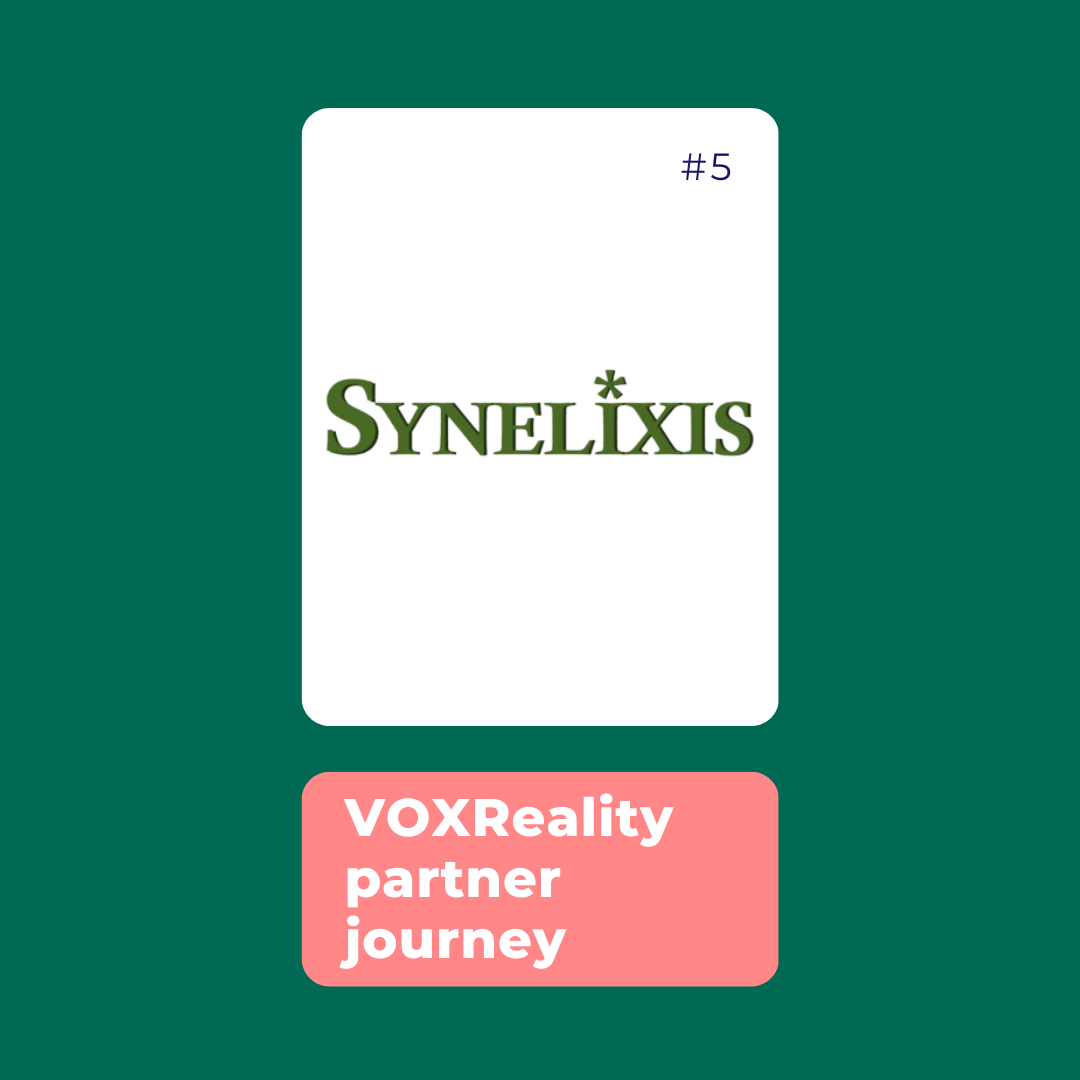As VOXReality comes to a close, Synelixis reflects on a transformative journey at the intersection of artificial intelligence and immersive technologies. In this interview, Georgios Nikolakis discusses how the project pushed the boundaries of virtual agents, blending advanced language understanding, computer vision, and real-time XR interaction. He shares the breakthroughs achieved, the lessons learned, and the vision guiding Synelixis as it helps shape the next generation of intelligent, human-centred XR experiences.
As VOXReality reaches its conclusion, what do you consider the most significant breakthroughs your team achieved in developing intelligent virtual agents and XR applications?
Throughout VOXReality, one of our most important achievements was creating virtual agents capable of operating seamlessly in real‑time, human‑centred XR environments.
A major breakthrough was our ability to integrate these capabilities directly inside live XR scenes, so agents could perceive what users were asking, respond to their intent, and adapt their answers accordingly.
Your work combined Natural Language Processing and Computer Vision to enable more natural human–machine interaction. What new understanding did this convergence bring to your approach in designing responsive XR systems?
Bringing NLP and Computer Vision together fundamentally changed how we design XR experiences. We moved away from treating modalities as isolated components and began designing systems that interpret user behaviour holistically—language, gestures, spatial context, and emotional cues.
It also deepened our understanding of contextual grounding—the agent’s ability to relate linguistic meaning to visual, spatial, and social context—which is essential for immersive experiences.
Developing adaptable and context-aware agents is a complex challenge. What have you learned about balancing real-time performance, personalization, and inclusivity across different XR environments?
We learned that achieving this balance requires a flexible architecture where each module can scale according to user needs and device capabilities. Real‑time performance depends not only on efficient AI models but also on smart orchestration—sending only the necessary information at the right time.
As AI agents become more capable and autonomous, how do you see ethical design and user trust shaping their development and acceptance in immersive environments?
Ethical design and transparency are no longer optional—they are foundational. Users need to understand when an agent is listening, how data is processed, and how decisions are made.
In immersive environments, the boundary between human and machine can blur, making responsible AI practices even more critical. We believe the next generation of XR agents must:
- Provide clear consent and control over data usage
- Offer explainable behaviour to avoid unexpected or opaque actions
- Be designed to avoid bias in language understanding and decision‑making
Looking beyond VOXReality, how do you envision Synelixis building upon these results to influence the next generation of AI-driven experiences in XR and beyond?
VOXReality has positioned Synelixis to expand its role in the next wave of intelligent, interactive systems. Moving forward, we plan to:
- Incorporate our multimodal agent capabilities into commercial XR solutions, such as remote training, education, collaborative workspaces, and virtual events.
- Extend our real‑time translation and communication technologies to support cross‑platform, multilingual collaboration tools.
- Push further into edge‑AI architectures, enabling immersive experiences on lightweight devices with stronger privacy guarantees.

Georgios Nikolakis
Software Engineer @Synelixis

